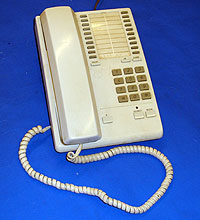Cost of Telecommunications (Cable TV, phone, Internet)? Is todays household telecommunications bill it more expensive than it was during the 1990s?
This is not exactly Politics and bureaucracy related post although it is likely to be affected by politics and bureaucracy. The issue with the rising cost of telecommunications where most modern people depend on.
I know most of us would just see our bills keep rising year after year. Cable companies increasing guage customers using various excuses such as high prices the networks are charging them which many customers argue that their satellite competitors did not raise rates and that cable is just being monopolistic as they usually have no competition in their area. While most could choose Satellite instead nowadays it could be out of the questions for those who live where tall trees or buildings block the view to the sky. Nowadays companies charge extra for pretty much modern day essentials such as HD receivers and DVRs. Which is pretty much a necessity for those with High Definition television sets(which poorly display standard definition signals in a much smaller display area or distorted) with digital receivers who may want to record shows for later watching which was once done free with a VCR in the past which is now out of the option. Today it is not uncommon for tv only rates to exceed $60 a month plus the additional rates around $10 for HD DVR and extra television set rates. Today most people would also need in addition to cable tv; Internet Access or phone service. These days cable tv and phone companies often provide both television, Internet, and phone together for bundled rates.
Though we wonder are things really overpriced compared to the good old days? We can try to compare modern rates with the rates we used to pay back in the early 1990s which is pretty much twenty years ago. While its true that Standard basic Cable tv bills used to be lower(Around $25 a month) of course not adjusting for inflation and cost of goods and having only 50 channels if not less, home phone bills as well as Internet ISP bills were actually higher in terms of use. In the early 1990s before phone service competition price wars it is not uncommon for phone companies to charge long distance for calls to the next county or even city and the line between local calls and long distance calls were pretty blurry. Long Distance is often charged by the distance starting from 0.15 a minute for the closest area they charge for and go up from there with calls across the country costing over 50 cents a minute and for International calls between $1-$4 a minute depending on destination and hours of call. It was not uncommon for average family phone bills to run over $200 a month. As for Internet the early Internet service providers or ISPs often charged dial up Internet by the minute and or the hour. The rate was often around $0.05 a minute or $1-$3 a hour which can get expensive for those using it for hours a day. For example those who use an average of two hours a day would see their rates between $60-$120 a month. That is if the dial up access number is actually within the local boundary set by the phone company otherwise long distance charges would also accrue which is an issue with many out of the way residences or businesses where there are no local isp phone numbers. Remember these rates are all in early 1990s dollars therefore adjusted for inflation and price of good and services with today's dollar the rates would pretty much equal to double the figures in 1990s dollars.
So now we wonder are we being ripped off today by the companies? Are we paying more or less? I would do a comparison. I will also do a optional factor in the use of cell phones nowadays.
1993
Landline Phone bill(based an average charge of .70 a minute of mixed use long distance calling for 250 minutes a month $175
Dial up ISP $2 a hour for average 2 hours use a day in a thirty day period $120
Standard basic Cable TV $25around 45 channels
total= $320(in 1993 US dollars)
It is assumed most residents would not had cell phones back in 1993 the few that do contend with enormous rates.
2013
Comcast Cable tv, phone, Internet rates. Normal(not promotional) rates $122 for digital starter with 80 channels with phone and Internet.
Comcast Digital preferred with 160 channels HD DVR, upgraded Internet, and phone normal rates $169
optional cell phone inclusion as most families in 2013 have cell phones for each family member: Cell phone i.e AT&T $50 each for unlimited talk and Data a family of four is $200.
total=
no cell phone: $122 for starter, $169 for preferred bundle customers
with smart cell phone: $322 for starter, $369 for preferred.
Remember I did not adjust for the cost difference between 1993 dollars and 2013 dollars. Therefore in today's dollars the 1993 rates, well you can do the math.

































